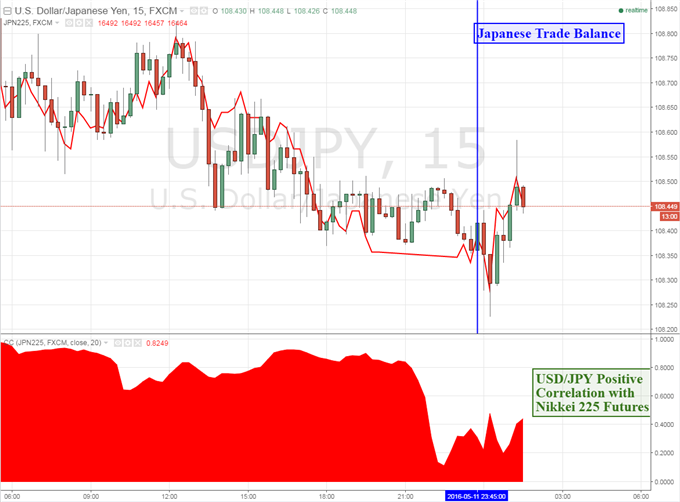The Japanese Yen showed a tepid reaction when the country released March’s trade balance figures. Heading into the data announcement, the Yen was recovering against its US counterpart in a risk-off environment, following Wall Street lower. Shortly after the data crossed the wires, the USD/JPY resumed falling, reaching its lowest level since Thursday’s trading session began.
The country’s trade balance rose to ¥927.2 billion in March, higher than the ¥906.0b estimates and the¥425.2b reading in February. The surplus was the highest since October 2010. The trade figures combine net exports minus imports which means Japan is selling more goods abroad than it is consuming. This is good news for a country that relies more on exporting.
Perhaps a lackluster response from the Japanese Yen can be attributed to the data’s limited implications for the Bank of Japan. The central bank’s main concern is the threat of deflation. In its most recent interest rate decision, the BOJ gave no imminent signals for rate cuts or an expansion to its monthly bond purchases, disappointing the markets.
After pausing to digest the information, the anti-risk Yen appeared to resume prior trading dynamics, pushing upward as the Nikkei 225 stock index and S&P 500 futures declined. However, the DailyFX Speculative Sentiment Index (SSI) is showing a reading of 1.85 following the announcement, implying that the broader USD/JPY bias continues to favor weakness.














Leave A Comment